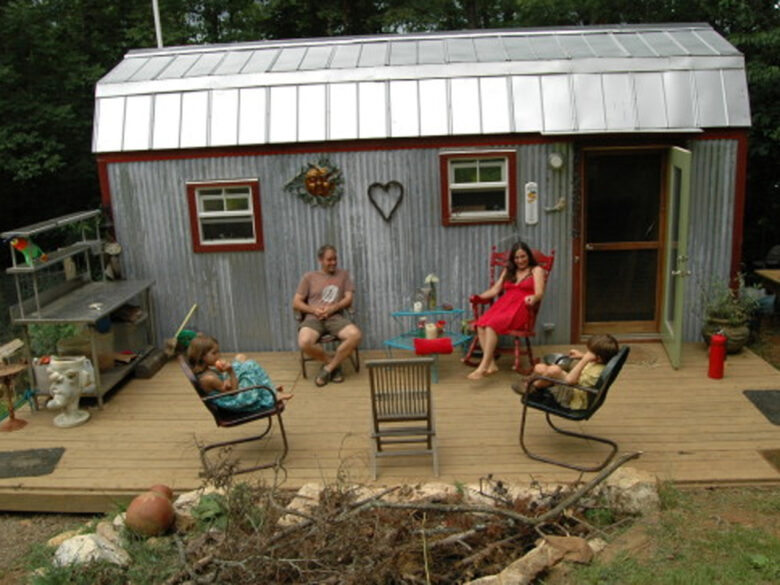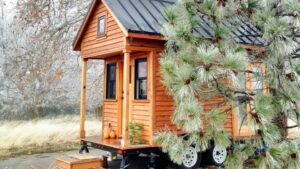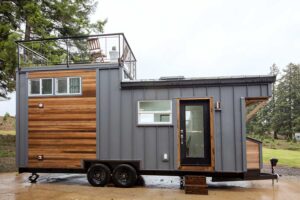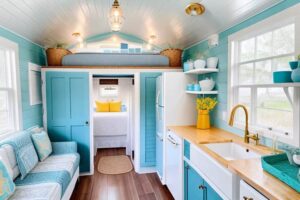The idea of tiny homes as an alternative lifestyle has become very popular in recent years. Tiny houses were first popular among minimalists and people who wanted to live more simply. Nowadays, they are becoming popular as a family lifestyle. There are economic, environmental, and social reasons for this growing trend, which offers a new way to become a homeowner. This article discusses the rise of small-family homes, including why they are so popular and the benefits they can bring.
1. What Attracts People to Tiny Houses:
Small homes, which are typically between 100 and 400 square feet, are not what most people think a house should look like. Families are increasingly interested in these tiny homes for several reasons:
Fair Price:
One of the main reasons families choose tiny homes is that they are affordable. Traditional housing costs can be very high, preventing many people from becoming homeowners. Tiny houses are a cheaper option because they typically require less upfront capital and have lower ongoing costs.
Long-term Care
Tiny houses consume less energy and materials than larger houses. Because these homes have a smaller footprint, they use fewer resources to build and require less energy to heat and cool. Many tiny homes also feature eco-friendly features such as solar panels and rainwater harvesting systems, in line with the growing focus on environmental awareness around the world.
Less Complicated Life
Families increasingly want a simpler, more purposeful lifestyle. People living in small homes are forced to prioritize experiences and needs over material possessions, resulting in smaller and less cluttered homes. People who value the experience and relationships that come with owning a lot of stuff will love this shift toward minimalism.
2. Design Innovations for Family Living:
It may seem impossible to house an entire family in a small space, but new designs and ideas have emerged to make small homes more family-friendly. Some of these design factors include:
A Space with Multiple Uses
Tiny house rooms can often be used for multiple purposes, so they can meet different needs. Designers are making the most of small spaces by creating furniture with hidden storage, sleeping areas that can be transformed into something else, and dining tables that fold away.
Bedroom with Loft
To make the most of floor space, many small houses have raised bedrooms. For adults, these raised sleeping areas can be cozy, but children often enjoy having their own cozy loft space. These elevated areas are safe for families as they have guardrails and safety ladders.
Outdoor Living Spaces
Many small home designs include large decks or patios because designers know the importance of spending time outdoors. These additions to the living space compensate for the lack of interior space by adding space for play, relaxation, and entertainment.
3. Overcoming Challenges:
Although tiny houses are cute, they can be tricky to live in, especially for families. Some common issues include zoning regulations, lack of sufficient storage space, and the need to fully utilize space. On the other hand, proponents say these problems can be solved with careful planning and creative design to create comfortable and functional living spaces.
Zoning and Regulation Issues
For people who live in small houses, zoning regulations can be strict. Many cities have minimum square footage regulations for homes, making it difficult for small homes to meet these regulations. Advocates and educators are working to change the rules so that tiny homes can be built in a way that works for them.
Storage space
Storage space is very important for small families, especially families with children. As a result, designers have come up with new storage options such as built-in cabinets, under-floor storage, and furniture with hidden compartments. An important way to solve storage problems is to make full use of vertical space.
Help Community
Families can get additional help by building and living in a tiny home community. Living in a small space can cause problems, but shared facilities, common areas, and a sense of community can help. These helpful communities grow as people who love and support tiny homes work together to make tiny homes stronger.
Conclusion
Tiny homes are becoming increasingly popular among families, a sign that the tastes and needs of today’s homeowners are changing. Tiny houses are becoming increasingly popular as a lifestyle because they are affordable, environmentally friendly and people want to live simply. As new designs continue to meet the specific needs of homes, and laws change to support this growing trend, the Tiny House movement will change the way new generations view homes. Tiny homes offer families an alternative way of life, encouraging conscious living, efficient use of resources, and a closer connection to the community and the environment. They can be used as a permanent home or as additional living space.
FAQs
1. What does a small house mean?
Small houses, usually on wheels and between 100 and 400 square meters, are called ‘tiny homes’. It is designed to offer you a simple yet elegant place to live.
2. Why do families choose small houses?
There are many reasons why families are interested in tiny homes, including that they are affordable, environmentally friendly, and make life easier. These homes are an economical alternative to traditional homes. Moreover, they are better for the environment and help people live more consciously.
3. How do microhomes meet the needs of families?
Newly designed tiny homes often feature multi-use rooms, bedrooms on elevated areas, and outdoor living areas to make the most of space and meet the needs of the family. Tiny houses are good for families because they have creative ways to store items and get help from the community.
4. Why is it difficult for families to live in small houses?
Families living in small homes may face issues such as zoning regulations, insufficient storage space, and having to make the most of limited living space. But advocates say the problems can be solved by changing the rules, coming up with new designs, and helping small home communities.
5. Are tiny houses suitable for families with children?
Families with children can live in Tiny Houses. To make tiny homes comfortable and useful for families, designers added loft bedrooms, outdoor space, and creative storage.
6. How do tiny houses help the environment?
Small homes are better for the environment because they take up less space, use fewer resources to build, and require less energy to heat and cool. Many small houses are equipped with environmentally friendly features, such as solar panels and rainwater harvesting.



